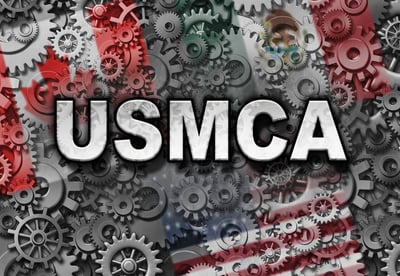A new "NAFTA"... The USMCA
After more than a year of intense meetings and negotiations, Canada, the U.S. and Mexico have tentatively settled on a trade deal to replace NAFTA. In the final round of meetings that concluded at the end of September, the United States-Mexico-Canada Agreement (USMCA) was unveiled, sporting changes in the following key areas.
*USMCA/CUSMA replaced NAFTA on July 1st, 2020. Read More...
Dairy
Canada's long-standing dairy supply-management system – one of the primary sticking points for Canadian negotiators – remains in place. But in the new deal, U.S. dairy farmers will be able to sell milk products in Canada duty-free.
Although consumers will enjoy a greater variety of cheese and other dairy products, we shouldn’t expect substantially lower prices since only a small portion – 3.6 percent – of Canada’s dairy market is open to U.S. products and exporters from south of the border are expected to more or less match Canadian prices.
Automobiles
In order to qualify for tariff-free imports under the new deal, 75 percent of any car or truck produced must contain components from North America – up from the previous 62.5 percent. Vehicles with less than 75 percent North American content will be subject to the most-favoured-nation tariff of 2.5 percent – provided total exports do not exceed an agreed-to number of vehicles.
By 2023, 40 percent of a car or truck will have to be made by workers earning at least $16US per hour. Also, 70 percent of the steel and aluminum used in the auto sector must be produced in North America. (Notably, the retaliatory tariffs on steel and aluminum introduced earlier this year remain in place – for the time being anyway.)
 Dispute-resolution
Dispute-resolution
NAFTA’s dispute-settlement system – a.k.a. Chapter 19 – was another non-negotiable piece for Canada. The U.S. had sought to change or remove it throughout the negotiations, but Canada and Mexico held strong, and it remains in place, providing exporters with protection from the unfair application of domestic laws on anti-dumping and anti-subsidy duties.
E-commerce
The new deal allows Canadian shoppers to spend more on goods purchased from the U.S. before being hit with duties. The current limit before duties kick in is a mere $20 (while in the U.S., the limit has been $800 for years). This is good news for consumers, but the lower cost of cross-border shopping may negatively impact Canadian retailers.
Pharmaceuticals
Companies that produce biological drugs (those derived from living organisms – such as antibodies) will now be granted exclusive access to Canada’s market for 10 years (up from the existing eight). This could stall or reverse a trend of falling medication prices in Canada, since generic drug makers will have to wait longer to introduce lower-priced alternatives to the market.
Additional Areas
These are just a few of the notable changes expected under USMCA. Other areas of anticipated changes include digital trade, intellectual property rights, environmental policies and labour practices.
Before any of the new provisions take effect, each country’s legislatures must formally sign onto the deal – a process that will take several months. A formal vote won’t be held in the U.S. Congress until 2019, so it's likely the first of the provisions won't take effect until some time in 2020.
As always, our customs consultants are here to answer any questions you might have about the progress of the new trade deal and how its implementation will affect you.
Information provided by: NAFTA & Free Trade Dept. - Cole International

Latest Articles
- Watch out for these extra charges on your freight bill
- Key differences between duty drawbacks and duty refunds for importers
- Mitigating container shortages and rising shipping prices for ocean imports
- How Canadian importers benefit from end use tariff codes and conditional relief
- The benefits of operating as a Non-Resident Importer in Canada
